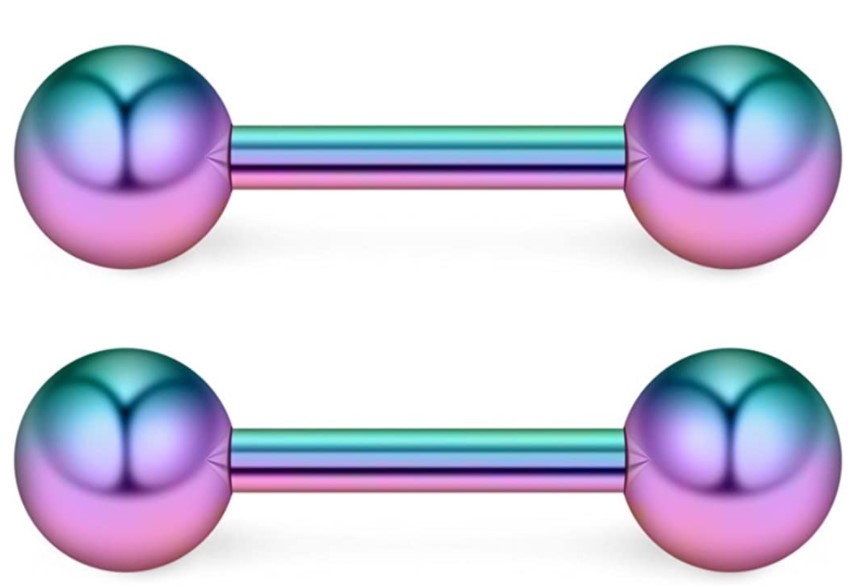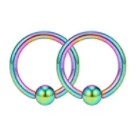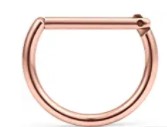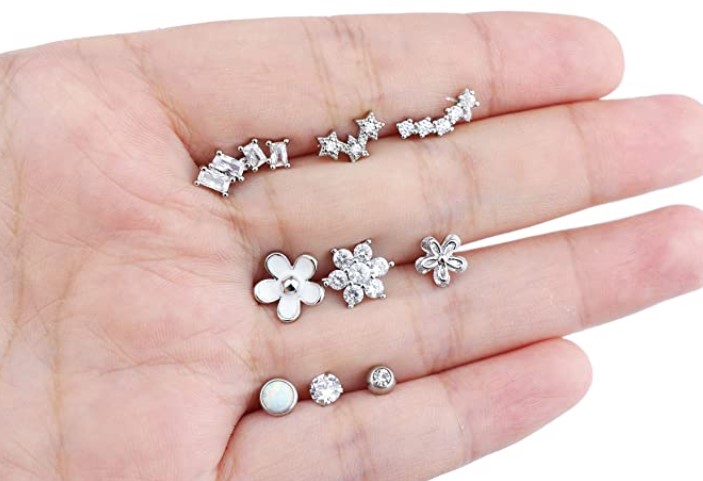The conch piercing is called after the shell of the ears having a little similarity. The piercing is a conch. It is one of the most personalised body piercings and when you create a trendy, chic and fashionable portrait, it’s fit for the bill.
However, how do you know if that’s the best way for you?
We have covered you! We have covered you! This is what you need to read about conch piercing to help you determine if it is correct to pierce.
Table of Contents
What is conch Piercing?
You may select one of the two types in conch piercings: the central conch piercing or the outer piercing of the conch. At the top of the cartilage, the external piercing is usually adorned with a hoop along the outside of the ear facing outside. It is in a visible place and automatically catches the eye. The inner conch piercing is in the lower cartilage and is usually adorned with shiny cartilage studs. Here, the drill passes straight through the earrings and is concealed in the inner curve of the ear.
How much does the conch piercing hurt?
The piercing of the conch does not injure worse than any other piercing cartilage. Cartilage piercings generally dip on the pain scale around midway, and the shell is the same. They hurt worse than the lobe piercing, but most people shouldn’t be able to take it.
The conch is typically penetrated by a 14G needle. Although you might think of a dermal punch rather than a needle if you do. You’re not sure. The dermal punch gives you the greater size, but in fact it extracts more of the cartilage instead of only piercing the tissue, because it is more invasive.
It is possible to stretch cartilages if you want a wider gauge but find the dermal punch daunting. Also be aware that even cartilage piercings with smaller gauges are impossible to cure, and if you decide someday to get rid of your conch piercings, a larger gauge would need intervention. Consider this piercing even before you see your piercer so it would be more permanent than most options for piercing.
Best Jewelry for Conch Piercing
- Circular, Curved and Straight Barbells

You can still go for round, angled or straight barbells if you choose to go for anything a little less conventional.
Circular barbells look like arrows and are easy to use. Due to the openings on both ends, they are easy to clean and maintain. Curved barbells, but not as described, are also a good alternative. The straight barbel is very like a stud, except the back has a rounded ball.
Be sure to remember the length of the barbell when picking a straight barbell to perforate your conch. The longer it is, particularly during the evening when you sleep the more painful it could be.
2. Captive Bead Rings

Captive bead rings are hoops of a single unattached bead placed on each side of the ring by stress. The perle may be removed and inserted by releasing stress on the perle. This is a common alternative for conch piercings as it looks amazing and can easily be worn.
3. Clicker Rings

Because of the hinged clasp that snaps in place between two pins, the clicker rings are very easy to discern from the rest of the ring styles. They either have a straight or curved post, and the form perfectly matches every kind of percussion. These are very useful and they make it so much easier to change the jewellery. You may also select from various singular models and designs.
4. Conch Studs

Conch bolts create great decorations for both inner and outer conch piercings with the labret bolts being the most common choice because they are at the same time stunning and convenient. Bothing may be done with the outside as well as the inside conch. Find curved adorned bolts to follow the normal ear curve for internal conch piercings.
You can choose the type of jewellery by the size of your perforation, but one of the most common is smaller and finer pieces of joy.
Conch Jewelry Metals
Your original piercing gems should be made from an appropriate substance that will not make the development of healing complications. Chirurgical steel and titanium are the most widely used components because they are hypoallergenic and biocompatible. But other good choices are solid gold, titanium, niobium and some kinds of plastics.
While many people like glass-based ear-piercing gems, we don’t advise them because glass can shake and inflict serious damage. We also recommend that you remain free of plastic jewellery because plastic in certain people can induce allergies.
Conch Piercing After Care
Conch ear piercings will take a long time, depending on how well you obey the following guidelines, to be healed entirely from somewhere from 6-10 months. Whatever it’s tenting, don’t adjust the necklace until the main cure is over. It can take up to six months. Do not remove or drag your jewels, since it can lead to infection. Keep the piercing at least two times a day dry and clean the cut. As always, follow the directions given by your piercer to help the piercer recover as easily as possible.
What is a conch piercing good for?
The middle of the ear — namely the region with the most space — has a conch piercing which is one of the most customised ear piercings you can have due to its positioning.
Is a conch piercing painful?
What is the damage caused by the conch? The piercing of the conch is no harm other like any other piercing cartilage. Cartilage piercings generally dip on the pain scale around midway, and the shell is the same. It hurts worse than just a lobe piercing, but most people shouldn’t handle it.
How long after a conch piercing can I change it?
6 to 12 months. Try not to change your necklace. Do not try to change it. You will make the changes after 8-10 weeks with earliest lollipops, but you can wait at least 6 to 12 months before changing the joys with conch piercing.




